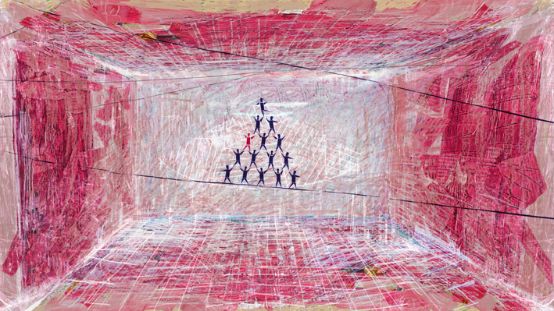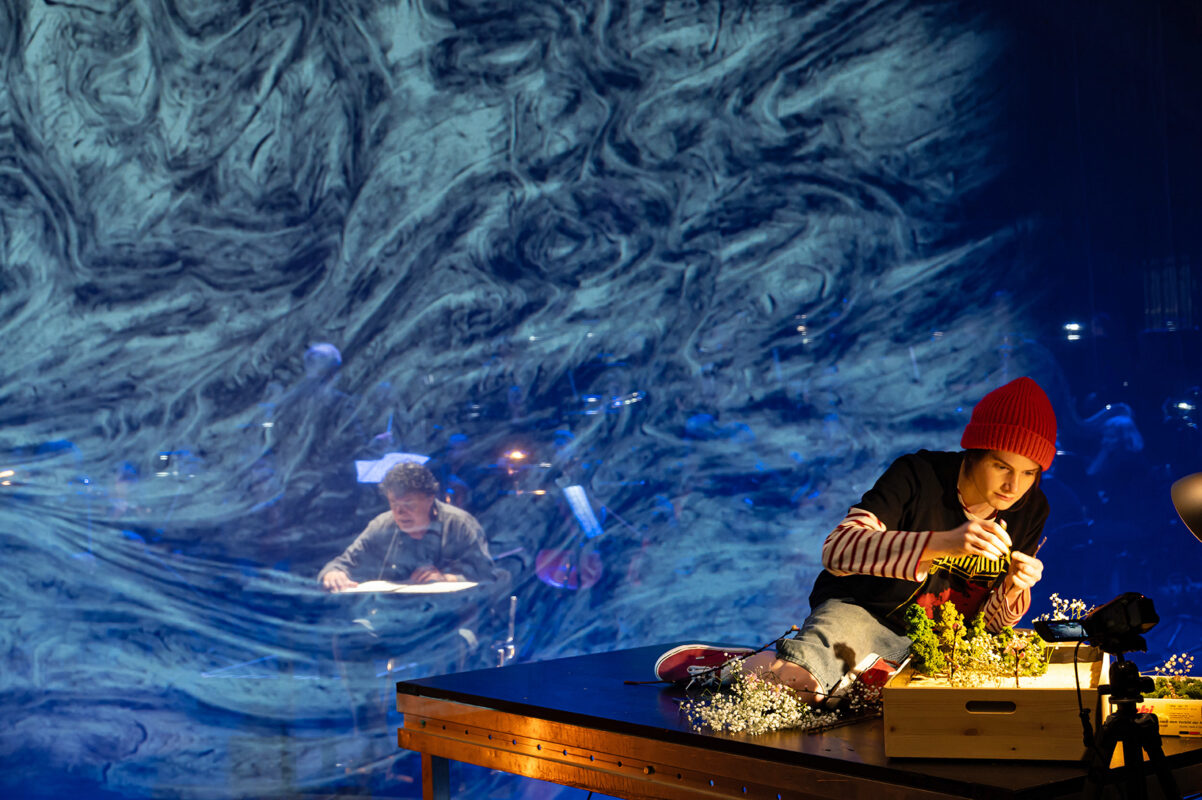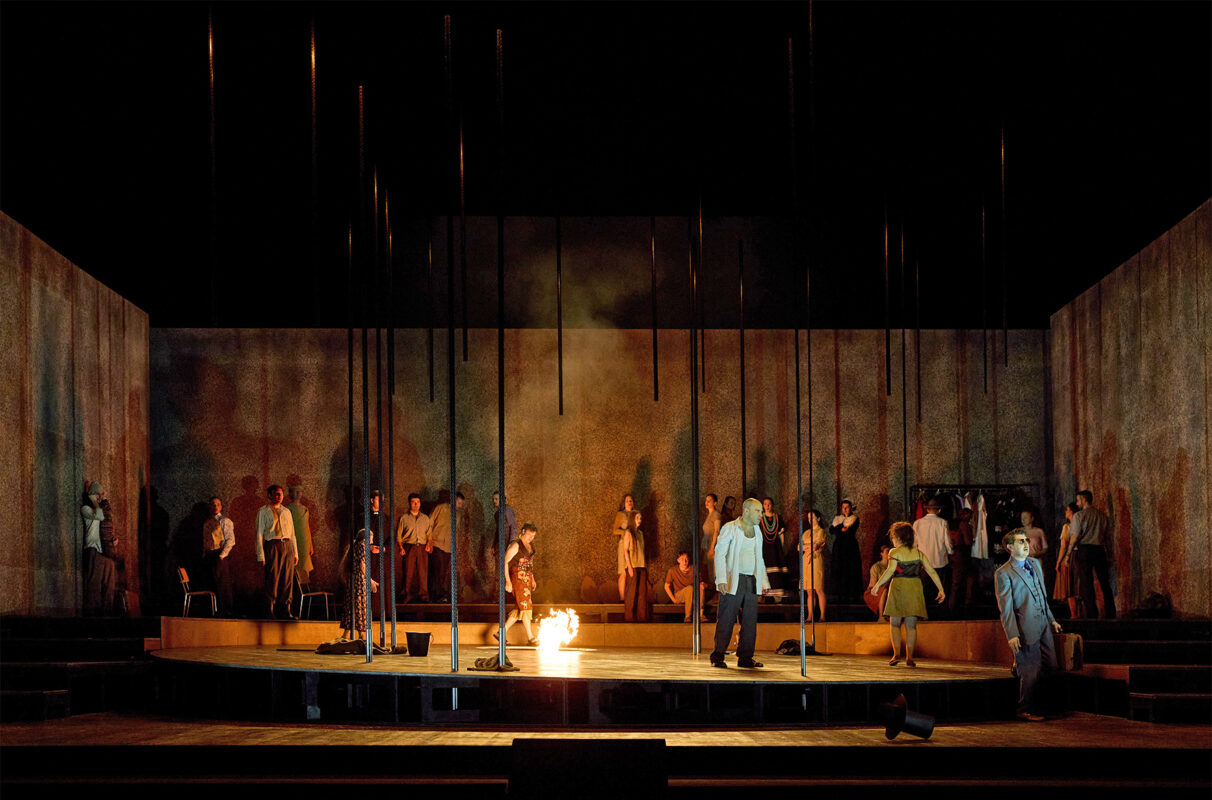Happiness Machine?
The Stuttgart Eclat Festival underpins its reputation as a performative laboratory in the festival landscape.

The Stuttgart Eclat Festival sees itself as a "seismograph for trends in social developments". For several years now, it has focused on presenting works that touch on aspects of current realities in interdisciplinary formats or even raise the possibility of a change in social perspective. Whether such high expectations in the confusing jungle of art music, media art and performance are fulfilled is always measured in the end by the individual projects. An impressive 37 world premieres ensured diversity (both thematically and qualitatively), covering a respectable range of current musical fields. Between pop Schubert homage (Eivind Buene), squeaky sex doll use as ensemble sound (Miquel Urquiza) and several hours of piano grinding (Philipp Krebs/Neus Estarellas), the table was richly set. A cursory gender analysis (excluding performers) revealed an approximate ratio of 37 (women) to 24 (men).
Hairy happiness from the lab
The most promising setting in the "Concept" section of this year's festival promised to be the three-hour Happiness Machinewhich brought together ten female composers in pairs with ten female filmmakers (why only women?) to explore the principles of the "Economy for the Common Good" under the auspices of Klangforum Wien. An idealistic reflection on the current state of the world and a possibly more sustainable economic order were the order of the day. However, when music becomes political, it can be difficult but interesting, but when art comes across as so obviously "politically correct", things get hairy. The Klangforum members' staged lecture interludes, which exuded the charm of an adult education seminar with autobiographical insights into being a musician, moralistic monologues and unnecessary self-congratulation, were rather counterproductive from an artistic point of view. As expected, the ten film/music collaborations varied in terms of content and style, although they all took place in the medium of animation (why actually?): Light-hearted children's book aesthetics, abstract structural processes, disdainful documentary (Samantha Moore/Malin Bang about a family textile business in Bloomers), expressively "overpainted" history (Michelle Kranot/Iris ter Schiphorst and the July Uprising in Vienna in 1927 in Suggestion of Least Resistance) or abysmal insights into the business practices of virtual world experience (Ana Nedeljkovic/Hanna Hartman in the eponymous Happiness Machine) was part of the visual approach. Musically, this took place between the extremes of pure acoustic mimicry (Malin Bang) and music that could also stand on its own in its energetic force (Ying Wang in Music Box). Why at the end of the sonic-visual pairings still Brine by Rebecca Saunders was another question mark in the overall dramaturgy, which was unfavorably bloated and detracted from the individual contributions.
-

- Joanna Kożuch / Ying Wang
- Film still from "Music Box", performed by Klangforum Wien as part of "Happiness Machine"
- Ying Wang's music could also stand on its own in its energetic power.
Music as music
The Stuttgart Composition Prize is a thankful eclat ritual, this time expertly awarded to Ondřej Adámek and Ole Hübner. Hübner's Three people, skyscrapers and palm trees in the background and the sea on the left (2016/17) was one of the most exciting pieces of the festival in its complexity, whose kaleidoscopic heterophony in a lavishly dimensioned cast (large ensemble, four speakers, 8-channel audio playback and electronics) opened up volatile, loose but rich associative spaces. No image description, rather open scenes of an imaginary "audio theater", which is autobiographically inspired, but must be filled with life by each listener for themselves. This was already an indication: The really interesting listening experiences took place widely in the "conventional" concert format, an indication that music as music beyond media art is not as dead as people currently like to talk about.
Polyrhythmically dense witchcraft
An expert in complex sound textures with real and inherent structures is Michael Pelzel, the lone Swiss personality in the field. His Hagzusa and Galsterei for 24-part choir, double bass clarinet and percussion on a text by Dominik Riedo was tailor-made for Rupert Huber in its cultic-ritual style and his SWR vocal ensemble threw themselves into it ecstatically with him. Pelzel's vocal evocation of death, the devil and medieval witchcraft was a success with the Stuttgart audience due to its harmonic and polyrhythmic density. On the other hand, Christian Wolff's Voices voices which began as Webern had earlier and then escaped "on light boats" with encyclopedic zeal through all conceivable forms of vocal music between canon and aleatoric.
Porcelain in the alchemist's kitchen
The acclaimed finale was provided by the now stronger SWR Symphony Orchestra with premieres ranging from large to powerful. Vykintas Baltakas created in Sandwriting II a continuum of fractures, where dramatic gestures and motif complexes were constantly layered, nested and driven forward in new and different ways, as if symphonic molecules had been brought into self-referential rotational processes. The late Romantic points of reference could then no longer be ignored in Christian Winther Christensen's Piano Concertowhich stripped the expressive-virtuoso gearbox of the genre down to its skeleton. A sonic "gutting", so to speak, which was based on the fact that the piano sound was extremely dimmed electronically and manipulated externally via keyboard. However, the result was by no means mere caricature, but a poetry which, in its hushed and implosive gestures, was immediately touching and met with a correspondingly enthusiastic response. The absolute opposite of Christensen's aesthetic of thinning out was embodied by Vito Žuraj's The transformer. A monumental score for mixed chamber choir and symphony orchestra, which was dedicated to the invention of German porcelain and therefore integrated a whole arsenal of porcelain bells into the percussion. Žuraj's tonal alchemist's kitchen, with its massive sound clusters and primeval sound attacks, which Brad Lubman passionately kept boiling, would have made Currentzis green with envy.








